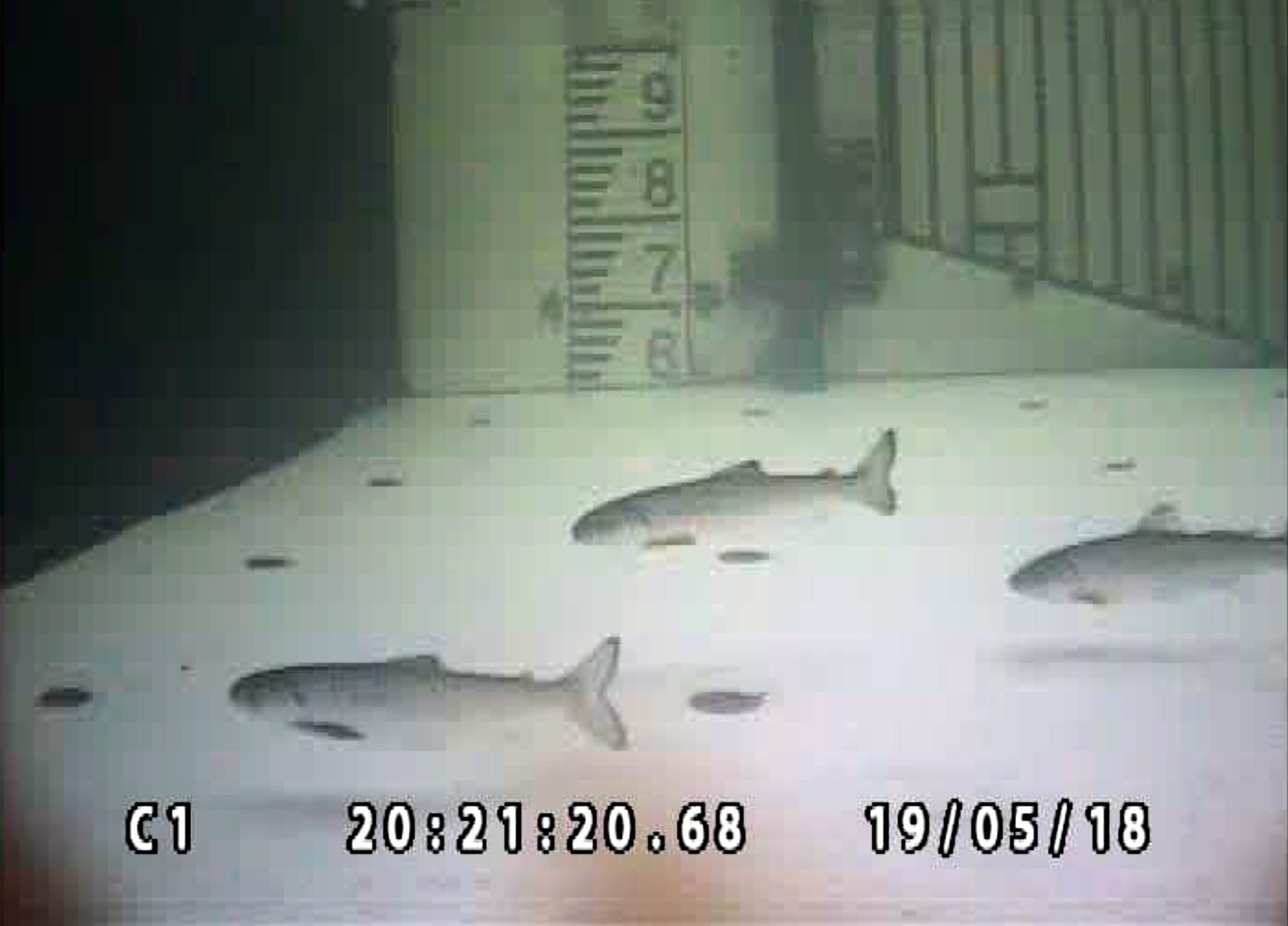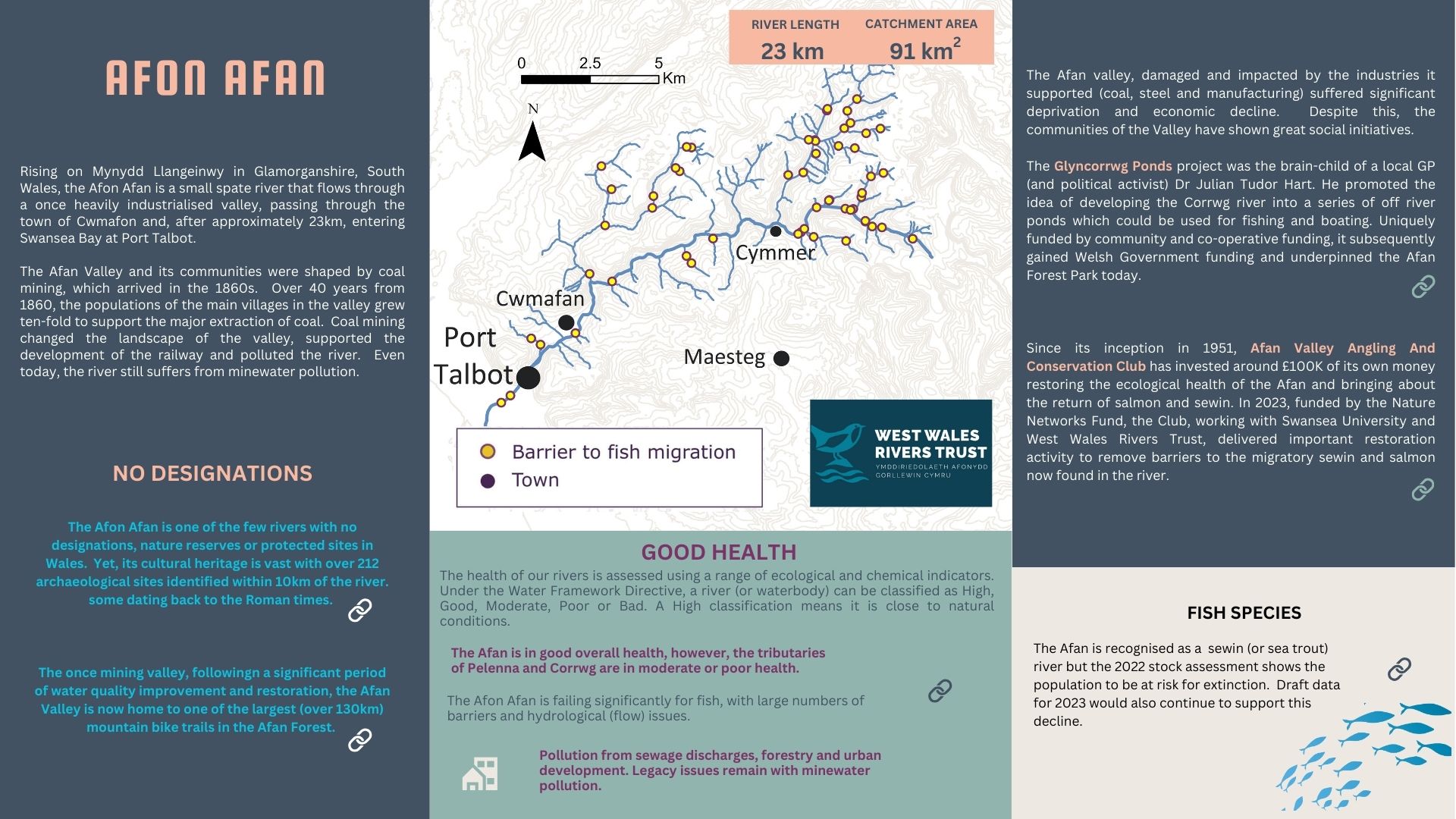November 2023
Rising on Mynydd Llangeinwy in Glamorganshire, South Wales, the Afan is a small spate river that passes through a once heavily industrialised valley before entering Swansea Bay at Port Talbot, some 16 miles from its source.
It is something of a rare yet fragile success story. In pre-industrial times, the Afan was noted as a healthy fishery. Surviving records have shown that in 1705, 65 salmon were caught in October, November and December alone and in 1707, 37 salmon and 569 sewin were caught. However, in common with most South Wales rivers, it suffered heavily from the effects of the industrial revolution, with coal mining alongside iron and tin industries in particular degrading its water quality severely. The once thriving river soon became devoid of its fish and in 1904, Augustus Grimble wrote in his book “The salmon and sea trout rivers of England and Wales” that the Afan and nearby rivers”¦.
“”¦must be left to join this list of rivers depleted of their fish by the pollutions from the vast and ever-increasing industries of this part of South Wales. The poison refuse of copper, lead, tin, iron and coal works has gained too much ground to be interefered with now, and it is nearly certain that salmonidae will never again frequent any of these streams.”
Such were the pollution levels at the time, it was probably easy to view the Afan’s future as hopeless. But Grimble was wrong. With the demise of coal mining and heavy industries in the latter part of the twentieth century, its water quality began to improve (although pollution threats from redundant mines remain today). And in 1988, the first salmon was caught in the Afan for nearly 120 years.


Corlannau Weir on the lower reaches of the Afan in the 1970s (left). The photo on the right shows the weir today, lowered and with a Larinier fish pass installed.
For South Wales’s rivers, the impact of the industrial revolution was not just about water quality though. The era saw a huge increase in the number of weirs and other structures (bridge footings, culverts, pipes). For any salmon and sewin that survived the pollution, access to spawning areas and juvenile habitat became increasingly difficult. And while water quality steadily improved with the demise of mining and heavy industry, these barriers to fish migration remained.
Impediments to migration are one of the primary causes for depleted fish populations throughout Europe. For rivers such as the Afan, not only do barriers prevent adult salmon and sewin from reaching their spawning grounds, they also present young salmonids (smolts) trying to reach the sea with a major problem. These young fish pause their journey at every obstacle while they decide how to navigate their way past, leaving them very vulnerable to opportunistic predation. There is plenty of scientific evidence to show that in some years, rivers with multiple barriers can lose a very high proportion of their smolt run in this way.

Barriers to migration are one of the primary causes of depleted fish populations across Europe.
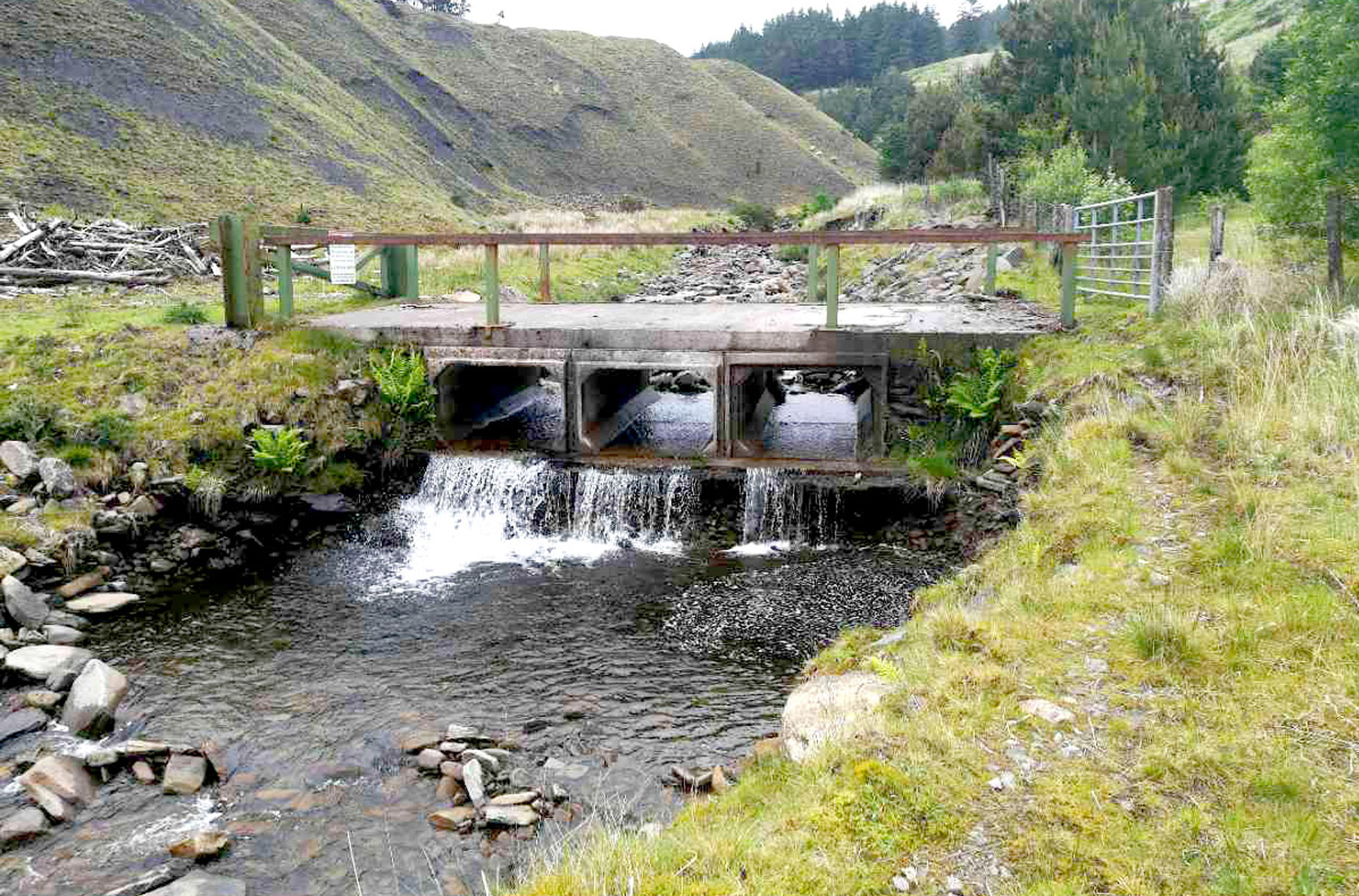
A project by Swansea University in 2021 identified an astonishing 295 structures in the Afan. Even small pipe bridges such as this one on the Corrwg, a tributary of the Afan, can be a total or partial barrier to fish migration.
There are other issues with barriers too. The more a river has, the more susceptible resident fish species are to pollution events, unable to escape up or downstream easily. A section of river that is cut off also takes much longer for fish numbers to recover from pollution. Weirs in particular also de-naturalise a river’s flow, creating canal-like impounded sections immediately upstream that collect silt and smother invertebrates and fish eggs.
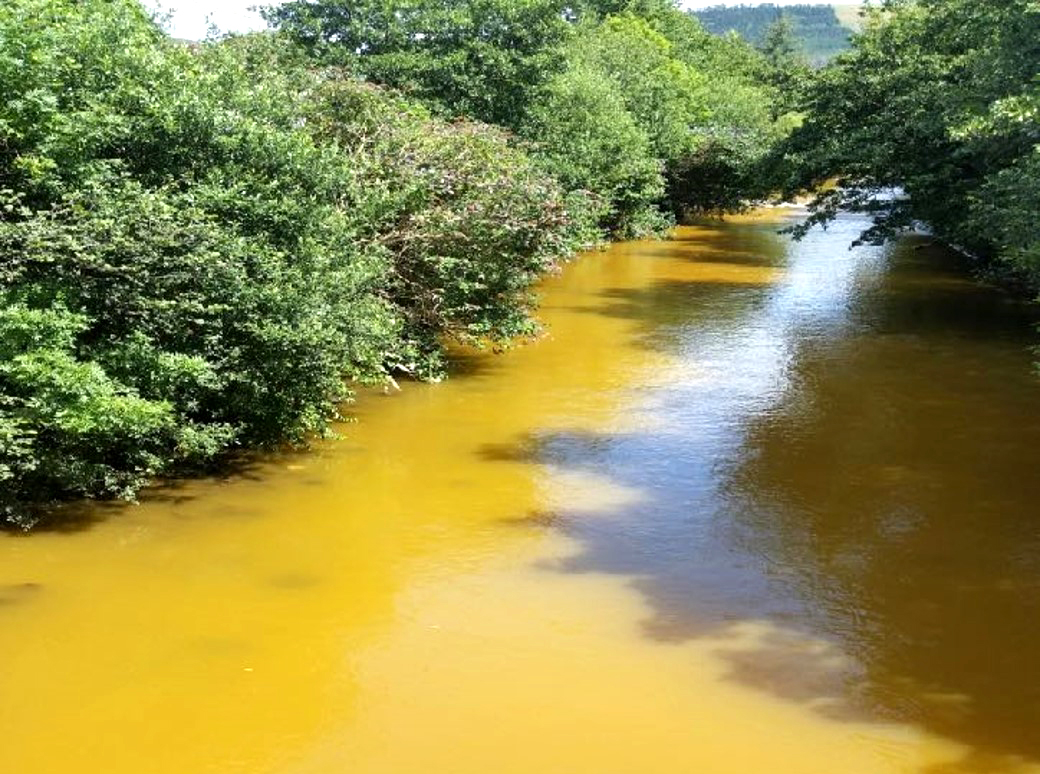
Pollution from redundant mine in the Afon Pelenna, one of the Afan’s main tributaries.
Salmon smolts migrating through the Green Park Weir fish pass on their way to sea.
Downloadable River Afan factsheet
A project by Swansea University in 2021 identified an astonishing 295 structures in the Afan, right into its headwaters. However, thanks to the significant efforts of an enterprising local angling club, many of the more problematic ones have been resloved and fish migration on the Afan has improved markedly in the past few decades.
Since its inception in 1951, Afan Valley Angling and Conservation Club has invested around £100K of its own money in drawing down additional funding to restore the ecological health of the Afan and bring about the return of salmon and sewin. One their early successes was winning a legal battle against the Coal Board in 1958 over its almost daily pollutions.
In 2017 the club was part of a “Afan Water Management Group” that included Tata Steel, Natural Resources Wales, port operator ABP South Wales and the county council that began modifications to Green Park Weir in Port Talbot.
The weir had been built in the 1890s to provide water for Port Talbot dock and the steelworks. The work enabled the construction of a “Larinier” style pass to resolve the fish migration problems it caused. The group have also put in fish passes further upstream at Corlanau and a fish easement at Maes y Bettws.
Earlier in 2023, West Wales Rivers Trust also partnered Afan Valley Angling And Conservation Club and Dŵr Cymru as part of the Reconnecting the Salmon Rivers of Wales project to remove three redundant weirs belonging to the water company in the upper reaches near Cymmer. While relatively low in height, the weirs were disrupting natural flows, along with the movement of gravels and sediment in the river. With them now gone, the Afan here is able to flow freely again. The trust is also scoping a new pass at Maes y Bettws and with its partners, working with local volunteers to clear both Japanese knotweed and Himalayan balsam from the Nant Clais, one of the most important spawning tributaries on the lower Afan.
While these efforts have helped to restore a small but growing population of Atlantic salmon in the Afan, fish migration issues remain. For example, Newbridge Weir on the Afan estuary is a partial barrier that delays migrating fish both upstream and down, leaving them more vulnerable to predation until the incoming tide covers the structure and allows them to pass. Removing the weir is not an option as it supports a CADW Grade 2 listed bridge upstream. Instead, Afan Valley Angling and Conservation Club are hopeful a “rock ramp” fish pass can be installed on the left bank (right hand side of the photo below).Â
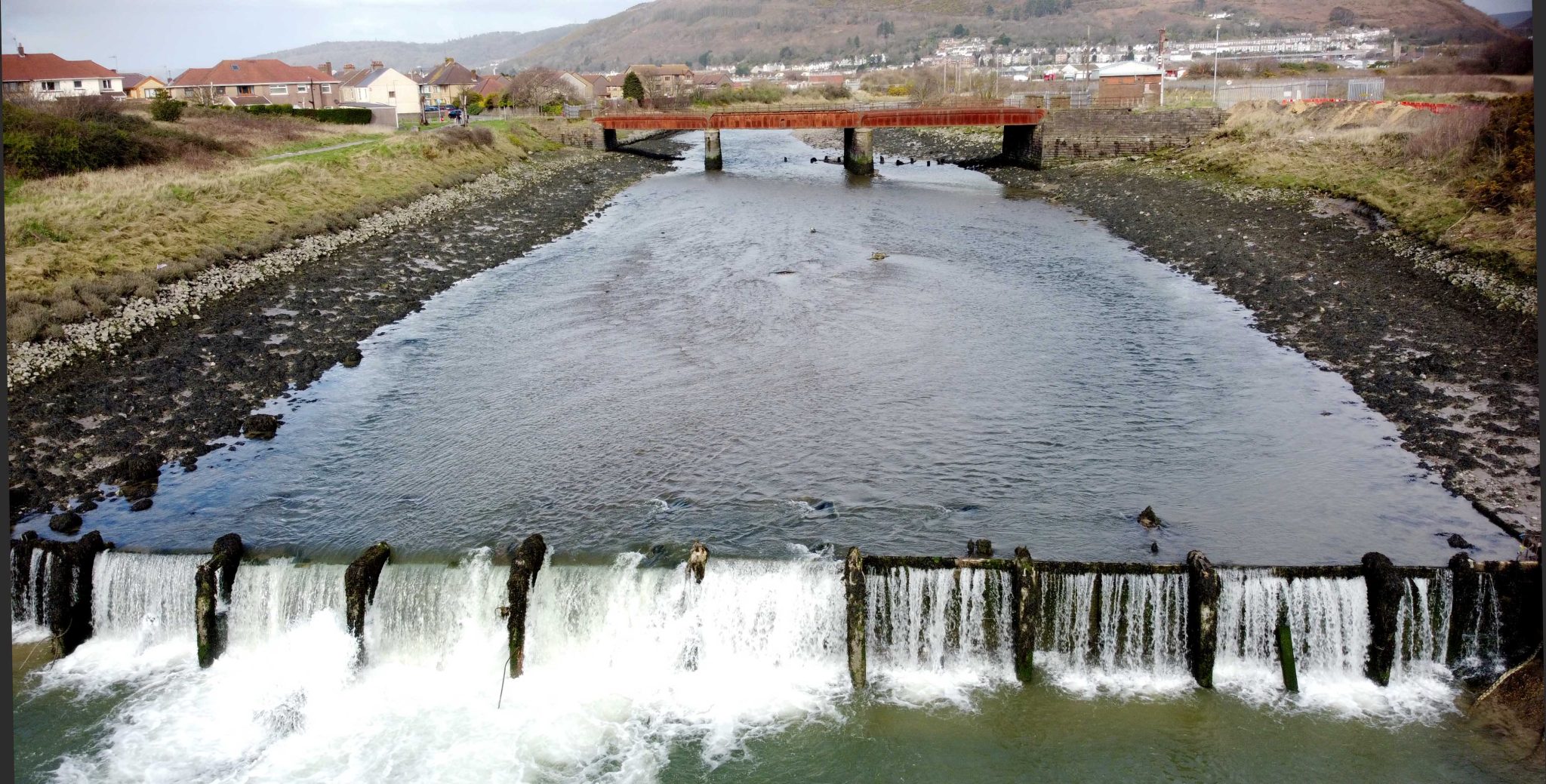
Newbridge Weir in the tidal reaches of the Afan. Despite only being passable by migrating fish when the incoming tide submerges it, this structure cannot be removed as it supports the CADW Grade 2 listed bridge just upstream. A rock ramp fish pass is planned on the right hand side of the photo.
Having put so much of their time, effort and resources into the Afan’s revival, the club are accutely aware of future risks to the river’s health. In addition to the ever-present possibility of pollution from redundant mines, sewage discharges, fracking, small hydro schemes and tidal power proposals are all threats that could cause reversal of its fortunes.
The last word should go to Ivor Lewis, who in his 1999 book “The Afan Fisheries” paid tribute to the recovery of the river and what could be achieved by a small, dedicated group of people, “”¦.unwilling to accept the legacy of the past and who were determined to restore their heritage.”
Our thanks to John Phillips, President of the Afan Valley Angling and Conservation Club, and to West Wales Rivers Trust for their help with information and photos.
References & More Information:
West Wales Rivers Trust weir removals on the Afan.
“Adaptive Management of Barriers in European Rivers (AMBER)” Swansea University.
“Salmon and Sea Trout Rivers of England and Wales” Augustus Grimble, 1904.
“The Afan Fisheries” Ivor Lewis, 1999.

